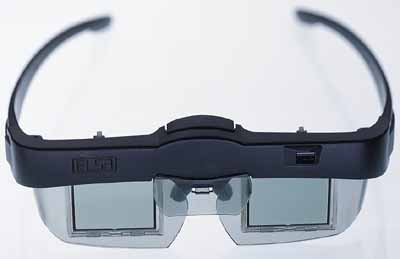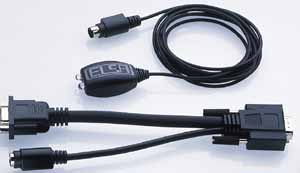ELSA GLADIAC ULTRA 64MB GeForce2 Ultra
by Anand Lal Shimpi on October 12, 2000 2:47 AM EST- Posted in
- GPUs
Feature-wise, the GLADIAC ULTRA is essentially a completely stripped version of the NVIDIA GeForce2 Ultra reference card we saw back in August. The board was shipped to us with no TV-out header and no DVI port. While we didn’t expect to see a DVI output connector on the GLADIAC ULTRA since there is still a relatively low installed user base of DVI flat panel monitors, what was truly interesting was the fact that there wasn’t even a cutout for an add-in TV-out module on the card. This is evidence that ELSA probably had one thing in mind with the production of the GLADIAC ULTRA, and that being “get it ready and shipped as soon as possible.” Without a cutout for the S-Video port on the expansion slot bracket on the card, the only hope for ever having video out support on the GLADIAC ULTRA is if you replace the expansion slot bracket on the card itself.
This brings up the next point of concern, ELSA’s VIVO module. Just as with the GLADIAC, ELSA is promising the availability of their VIVO (Video-In/Video-Out) add-in module for the GLADIAC ULTRA. This module essentially looks like the TV-out header that is present on the NVIDIA reference design however it features a Phillips controller chip instead of the Brooktree BT869 chip that can only do TV-out. This custom chip will allow users to switch between using the single S-Video port as a TV-input or output port, most likely through an interface in ELSA’s drivers.

No S-Video cutout on the
GLADIAC Ultra

The reference board features
S-Video and DVI ports
This unfortunately poses a number of problems. For starters, as we just finished mentioning, there is no space for a S-Video port on the expansion slot bracket, meaning that ELSA will have to package a modified bracket as well as instructions on how to remove the current one if they plan on releasing the VIVO module. Another way around this is for ELSA to simply start shipping boards with a pre-modified bracket, however this will leave early adopters in the dark as they will still be left with a bracket with no S-Video cutouts.
Secondly, with only a single S-Video port, the GLADIAC ULTRA loses quite a bit of functionality. While on an ASUS Deluxe card you are able to have an input device such as a VCR or Camcorder always hooked up as well as a TV connected for video output, the ELSA VIVO module will force you to use one function or the other (video in or video out) and not both simultaneously. There is another possibility here, that ELSA will adopt some sort of dongle that will attach to the single port on the VIVO module thus allowing simultaneous video input and output. It is hard to say for sure what will eventually happen as the VIVO module is still not available, even though it was something that was originally talked about when the GLADIAC was released.
One benefit of this however is that for those users that don’t really care about TV input or output functions, the added cost of the daughterboard is removed from the total price of the GLADIAC ULTRA and for those that really want it, provided that the module actually does hit the streets, an extra $40 will buy you the port.
Concluding the features of the GLADIAC ULTRA is the bundled 3D Revelator glasses. The 3D Revelator glasses which should work on all TNT, TNT2, GeForce and GeForce2 based cards including the GLADIAC ULTRA enable the simulation of a truly three dimensional environment while playing any Direct3D games.

This is accomplished by essentially fooling the human eye into seeing depth. We explained this process in our ASUS V6800 Deluxe Review:
[Fooling your eyes into seeing depth] is accomplished by rendering alternating frames in a game during each refresh cycle of the monitor. The glasses work in conjunction with this technology in order to match each frame to a separate eye. This is done using a polarizing effect. When electricity is passed through a thin layer of a semitransparent polarized substance that is sandwiched between two pieces of glass, the polarized part becomes darker. This lightening and darkening of the glass occurs in synchronization with the monitor refresh to allow only one eye to see each frame. For example, frame 1 is rendered for the left eye a bit to the left side of the screen and viewed through the transparent left lens. Then, the second frame in the game placed on the right side of the screen while the left lens of the glasses go dark. This works in the same way that normal depth perception is formed, as your eyes (which are set apart) do this naturally. To the onlooker without glasses, the game in question looks like two pictures overlapped on one another. To the person viewing through the glasses, the effect is 3D: looking almost like images and text are jumping out at you.
The 3D Revelator glasses differ noticeably from the VR glasses bundled with the ASUS V6800 and V7700 Deluxe cards. For starters, the glasses only support Direct3D games. Secondly, instead of connecting to the card via an 1/8” jack, the 3D Revelator glasses packaged with the GLADIAC ULTRA rely on a wireless infrared interface in order to communicate with the card.
The way this works is simple, ELSA bundles a Y-splitter cable with the GLADIAC ULTRA. This splits the 15-pin female VGA connector on the card into two connectors, another 15-pin female VGA connector for your monitor as well as a custom 3-pin connector for an IR transmitter. This IR transmitter has 6’ of wire between the actual transmitter and its 3-pin interface that connects to the Y-splitter so you can mount the transmitter closer to your monitor, where your head would normally be oriented towards while playing a game.

The 3D Revelator glasses have an IR receiver that communicates with this transmitter, and thus allows for the 3D effect to be created without any cables tying you to your computer, allowing a bit more freedom of movement and removing some wire clutter. The cordless glasses also conveniently shut off when you fold the right earpiece, something ASUS’ bundled glasses don’t do at all. Powering the glasses are two batteries that are stored in the nosepiece and ELSA also provides a smooth cloth case for the glasses than can also double as a cleaning tool.
On the software end, setting up the 3D Revelator glasses is fairly simple. For starters, you must use ELSA’s drivers, meaning you give up the benefit of always having the latest release drivers on your system. You have to wait until ELSA releases a driver update. Then, you must also have a monitor capable of displaying a resolution at somewhere between a 100Hz and a 140Hz refresh rate, this is to allow for the 3D effect to be simulated. After setting up your monitor to display at a refresh rate within the aforementioned range, you can enable the Stereo display option and you should be on your way.
Unfortunately there are some limitations. As we briefly mentioned before, this only works with Direct3D games. To take that limited support even further, not all Direct3D games will work with the setup either. The glasses may also cause headaches for some users because of the intense flickering caused by the alternate frame display.
For the most part, the glasses don’t, at least in our opinion, add much value to the GLADIAC ULTRA package, however some may get a little kick out of using them.










0 Comments
View All Comments